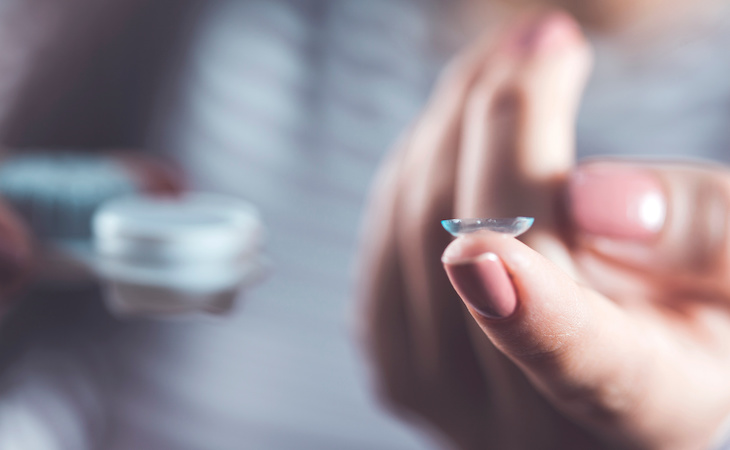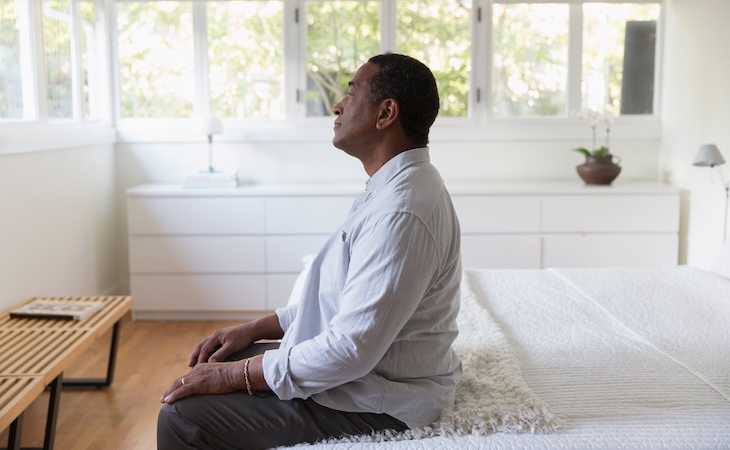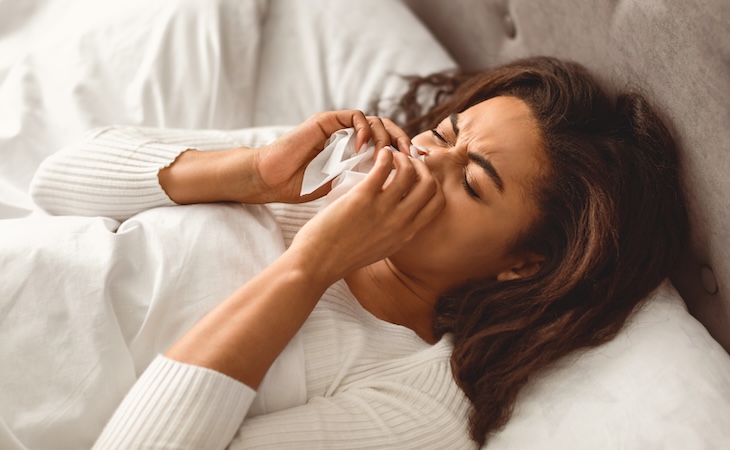At the end of a long day, you collapse into bed, intending to get a good night’s sleep. But then it hits you—you’re still wearing your contact lenses. You briefly consider leaving them in for the night. After all, what harm could sleeping in your contacts just this once really do?
If you’re one of the 45 million people in the United States who wear contact lenses, you’ve probably accidentally slept with them in a time or two. In fact, as many as one-third of contact lens wearers report not removing contacts before bed.
According to a 2018 report, many contact lens wearers—particularly teens and young adults—engage in risky behaviors (such as sleeping in their contacts) that put their eye health in danger.
The thing is, sleeping with contact lenses in can increase your risk for serious eye health concerns.
Let’s explore why wearing contacts while asleep can be such a dangerous practice and how to ensure you keep your vision safe while using contact lenses during regular activities.
Sleeping in contacts: Is it safe?
In a word, no.
While people often sleep in their contacts, many experts agree this behavior can increase the risk of developing eye problems.
“A lot of bacteria thrive in low oxygen level environments, and sleeping in your contacts can promote that,” says Besty S. Jacob, doctor of optometry. And yes, even using overnight-wear and extended-wear contact lenses can impact eye health.
The bottom line: No matter the type of contact lens, sleeping with them can cause damage to the eyes—and in more severe cases, this damage may not be reversible.
What happens if you sleep in your contacts?
Sleeping in your contacts can have many potential negative consequences for your eye health. One of the most common eye issues that can arise is microbial keratitis, an infection that happens when germs encounter the cornea.
According to the Centers for Disease Control and Prevention (CDC), microbial keratitis increases by five times in people who wear contacts to bed. If not adequately treated, microbial keratitis can lead to permanent eye scarring, which increases the odds of blindness.
Here are a few keratitis symptoms all contact lens wearers should know about:
- Irritation or itchiness in or around the eyes
- Watery eyes
- Watery discharge from the eyes
- Sensitivity to light
- Blurred vision
- Red eyes
- Pain in or around the eyes
Contact your eye doctor immediately if you experience these symptoms after sleeping in your contacts.
You may also be at risk of developing other eye infections related to wearing contact lenses, such as:
- Pink eye: inflammation of the membrane that lines the eyelid and eyeball
- Corneal ulcers: open sores that develop on the cornea’s outer layer
- Corneal hypoxia: a condition where the cornea is deprived of oxygen
Why does sleeping in your contacts cause issues?
Why exactly does snoozing in contact lenses make you more susceptible to eye issues? Here’s the deal: While sleeping, contacts act as a barrier between your eyes and oxygen and moisture—the two things needed to fight harmful bacterial and microbial organisms that can harm your eyes and, ultimately, cause vision loss.
How to safely wear contact lenses
Besides not sleeping in your contact lenses, here are a few easy tips for wearing contacts safely:
- Avoid poor contact lens hygiene by washing your hands before handling contact lenses.
- Follow the contact lens label instructions.
- Discard any contact lens solution after cleaning your lenses.
- Avoid exposing contact lenses to water or saliva.
- Don’t wear lenses while swimming. Stay out of hot tubs when wearing contacts.
- Replace your contact lens case every three months or as your eye doctor advises.
- Visit your eye doctor at least once per year for checkups.
FAQs
What happens if you sleep with contacts in?
Each time you sleep in your contacts, you increase your risk of eye infections and permanent damage. That’s because sleeping in your contacts lowers the oxygen supply to your eyes, increasing the chances of corneal hypoxia.
The result can be blurry vision, burning, and an annoying scratchy, gritty feeling. Other eye issues resulting from not removing contacts before bed can include watery eyes, redness, irritated eyes, sensitivity to light, and in the most severe cases, blindness.
According to Jacob, after sleeping in your contacts, you should remove them as soon as possible and wear glasses until an optometrist determines whether or not any damage has occurred.
Can I take a 15-nap with contacts in?
If you doze off for a short nap with your contact lenses in, your eyes should be fine. “Five- and 10-minute naps will not be a big risk factor,” says Jacob. “The chance of a bacteria proliferating that quickly is very, very low.”
How long can I sleep with contacts?
The best thing is to remove your contacts before sleeping. “It’s like playing Russian Roulette,” says Jacob. “If you do it once or twice, you may get away with it. But, if you keep playing the odds, you’ll get an infection at some point.”
If you’ve slept with your contact lenses in, it’s best to remove them immediately and make an appointment with your optician to assess your eye health. Although contact lenses are a significant advancement in vision technology, they still have some restrictions that should be respected for maximum benefit.
Certain things you do during sleep could signal a larger health issue. Learn about overnight behaviors that can be a sign of an underlying health problem.




